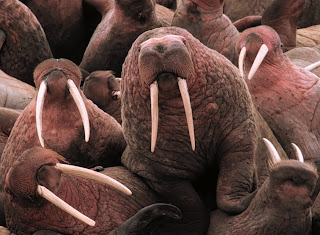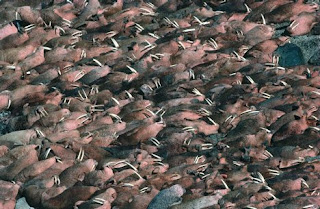Saturday, August 18, 2012
Walruses
The life cycle of walruses and polar bears were focused in the 2007 released Arctic Tale, a documentary aimed at showcasing the challenges and difficulties of living in truly cold, sub temperate environments.
Primed as a juxtaposition over what polar bears and walruses have to go though just to exist, the documentary also touched up on how much of an impact mankind has in the existence of polar animals, in an effort to illustrate how much damage mankind’s wasteful ways affects all creatures in this world, big or small.
The documentary did well in featuring walruses, from their dietary habits to the dangers they face in the cold and harsh wild.
As mammals, walruses are often categorized as “flippered mammals”, with certain species weighing as much as 3,700 pounds. Known for their long lifespans, walruses are also known for their sociable attributes, and given the harsh state of their natural habitats, one can’t really blame them for moving around in groups.
The name “walrus” is ascribed to have old Norse origins, more popularly known as the old Germanic language. Though the entomology of the name isn’t as exact as one would want it, it is speculated that the name combines “whale” and “horse”.
Though never kept as “beasts of burden”, walruses have been hunted in the past, favored mostly for consumption purposes, with their tusks also utilized in the making of different trinkets and other collectibles.
Today, they are among the many protected species, with different environmental and government agencies standing as their vanguards. As a species, they continue to be one of the world’s most easily recognized, even though the distribution of their population is limited to cold tundras and cold climes.
Subscribe to:
Post Comments (Atom)


















No comments:
Post a Comment